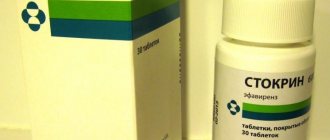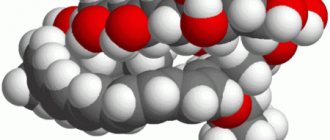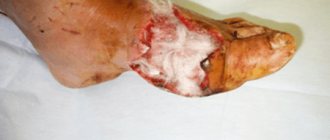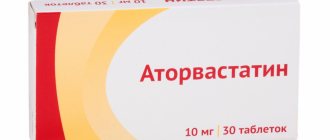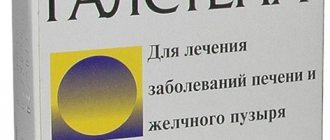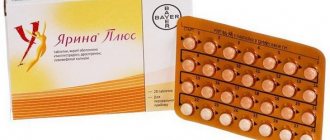- Price from 337 rub.
- Antiseptic drug.
- Application - hemorrhoids, dermatitis, eczema, psoriasis, wounds, bedsores
Analogues - Proctosan, Proctozol, Anestezol. You can find out more about analogues, their prices, and whether they are substitutes at the end of this article.
Today we’ll talk about Dermatol ointment. What is this product and how does it affect the body? What are the indications and contraindications? How and in what doses is it used? What can be replaced?
What kind of ointment
Instructions for use reveal the mechanism of action of the active substance, describe side effects and provide a list of indications for treatment.
The ointment is intended for external use. Has a homogeneous structure. Made on a Vaseline base.
The active substance is the antiseptic bismuth subgallate. Composition of dermatol ointment (per 20 g):
- Bismuth subgallate – 2 g
- Vaseline - 18 g
Pharmacokinetics
The absorption is insignificant. The substance that enters the body is excreted by the kidneys. Accumulates in bone and soft tissues, causing intoxication of the body. Penetrates the placental barrier.
Pharmacodynamics
Has medicinal properties:
- antiseptic;
- astringents;
- bacteriostatic;
- bactericidal;
- hemostatic;
- analgesic;
- drying.
Compacts colloids, mucus, cell membranes and intercellular fluid, exudate. A film forms on the surface of the tissue, which protects the nerve endings from irritation and relieves pain. Prevents the formation of edema.
At the local level, it narrows blood vessels, increases their elasticity, and reduces their permeability. Stops the inflammatory process and does not cause tissue irritation.
Indications
- slow-healing wounds;
- eczema;
- dermatitis;
- psoriasis;
- hematoma;
- trophic ulcers;
- bruises of joints and soft tissues;
- scratches, insect bites;
- burns (if weeping is observed after long-term treatment);
- bedsores;
- frostbite;
- acute condylomas;
- anal fissures;
- external hemorrhoids;
- eczema in the anus.
Contraindications
The external form of the drug has no contraindications, except for individual intolerance and the early stages of pregnancy.
Directions for use and dosage
Liniment - apply in a small amount to clean skin, using the required volume.
Three applications per day are sufficient.
For external hemorrhoids, tampons are made, soaked in drugs and applied to the sore spot. The duration of the course is determined by the doctor.
Side effects
Allergic reactions in the form of rash, redness, and swelling at the site of application are extremely rare. Causes drying of mucous membranes.
In childhood, during pregnancy and pregnancy
On the other hand, bismuth subgallate accumulates in the body and contributes to the development of chronic intoxication. Therefore, the drug is used with caution in pediatrics. Not prescribed for children under three years of age.
During pregnancy, it is not prescribed for treatment in the first trimester. In later stages of pregnancy, it can be used as prescribed by a doctor. For breastfeeding, cracked nipples are not treated and are not applied to the chest. For use in other areas, the product is used strictly according to medical prescription.
special instructions
Use with caution in case of impaired renal function.
The effect on the child’s body and intrauterine development has not been studied, so it is not used without a doctor’s prescription. Avoid contact with eyes.
- Dermatol has no complete analogue.
- Its advantages include the absence of contraindications and side effects.
- The price of dermatol paste is quite high; almost all analogues are cheaper.
- Almost all analogues of Dermatol are intended for use in proctology, and have additional properties - anesthetic, improving tissue microcirculation.
- Vishnevsky's liniment has a wider area of application.
Overdose
Long-term use can lead to excessive accumulation of the active substance in the body and cause an overdose. It is manifested by chills, fever, disturbances in the digestive tract, nausea, and rash. The functioning of the kidneys is impaired, nephritis and nephrosis are possible.
For treatment, an antidote is used - sulfhydryl compounds (dimercaprol).
Analogs
Preparations containing bismuth subgallate:
- Proctosan is an ointment for the treatment of hemorrhoids. It also contains the anesthetic lidocaine, bufexamac (acrylacetic acid derivative), titanium dioxide (astringent, drying effect).
- Proctozol - the composition is similar to Proctozan, with the exception of titanium dioxide.
- Dermatolotar liniment is a combined product containing tar. Tar has disinfectant and insecticidal properties, restores microcirculation at the site of application, and stimulates regenerative processes in tissues.
- Anestezol - antihemorrhoidal suppositories. The composition also includes menthol, benzocaine, zinc oxide. Properties: local anesthesia, antiseptic, hemostatic.
- Simetrid - anti-hemorrhoid suppositories. Contains the glucocorticosteroid fluocinolone acetonide, menthol and trimecaine.
- Bismuth subgallate is a powder for external use.
Analogues containing bismuth in other compounds:
- Parembal - ointment and suppositories for the treatment of hemorrhoids. Contains bismuth gallate.
- Balsamic liniment according to Vishnevsky is a combined preparation. Contains tar, bismuth tribromophenolate, bismuth oxide, castor oil. It has bactericidal, restorative, astringent properties. Restores local blood circulation. Liniment is used to treat hemorrhoids, furunculosis, abscesses, trophic ulcers, and psoriasis.
- Hemorrhoidal is an ointment containing procaine, fish oil, bismuth gallate, and belladonna extract.
- Procto is an ointment. Contains bufexamac, bismuth gallate and lidocaine.
Dermovate®
The drug Dermovate® should be used with caution in patients with a history of local hypersensitivity to glucocorticosteroids or to any excipient included in the drug. Local hypersensitivity reactions may be similar to the symptoms of an ongoing disease.
In some individuals, as a result of increased systemic absorption of glucocorticosteroids for external use, manifestations of hypercortisolism (Cushing's syndrome) and reversible inhibition of the hypothalamic-pituitary-adrenal system may occur, leading to the development of glucocorticosteroid insufficiency.
If any of the above occurs, the drug should be discontinued, gradually reducing the frequency of its application, or replaced with a less active glucocorticosteroid. Sudden cessation of treatment may lead to the development of glucocorticosteroid deficiency.
Risk factors for increased systemic effects include: the activity of the glucocorticosteroid and the composition of the drug for external use, duration of use, application of the drug to large areas of skin, use in closed areas of the skin (that is, in intertriginous areas or under occlusive dressings (diapers and nappies in infants can act as an occlusive dressing), increased hydration of the stratum corneum, use on areas with thin skin such as the face; application to damaged skin or other conditions that may involve a compromised skin barrier.
Compared with adults, children and infants may experience a greater percentage of absorption of topical corticosteroids, and therefore these patients are at greater risk of developing systemic side effects. This is due to the fact that children have an immature skin barrier and a higher ratio of body surface area to body weight compared to adults.
Use in children
If possible, long-term treatment with topical glucocorticosteroids should be avoided in children under 12 years of age, since long-term topical use of glucocorticosteroids may cause suppression of adrenal function.
In children, more often than in adults, atrophic changes in the skin occur with external use of glucocorticosteroids. If clobetasol is prescribed to children, the course of treatment should be limited to a few days, and observation by a doctor is required at least once a week.
Use for psoriasis
In some cases, treatment of psoriasis with topical glucocorticosteroids may be accompanied by resumption of disease symptoms, drug resistance, development of a generalized pustular form of psoriasis, and local or systemic toxicity due to impaired skin barrier function, so careful monitoring of the patient is especially important.
Concomitant infection
If a secondary infection occurs, appropriate antibacterial therapy should be carried out. If there are any signs of infection spreading, it is necessary to stop the external use of glucocorticosteroids and carry out appropriate treatment with antibacterial drugs.
Risk of infection due to occlusion
The warm, moist conditions created by applying an occlusive dressing are conducive to bacterial infection, so be sure to thoroughly cleanse the skin before applying a new dressing.
Chronic leg ulcers
Topical corticosteroids are sometimes used to treat dermatitis around chronic leg ulcers. However, such use may be accompanied by an increased incidence of local hypersensitivity reactions and an increased risk of local infections.
Application to facial skin
Application to the skin of the face is undesirable, since this area is more susceptible to the development of atrophic changes. If applied to the face, treatment should be limited to a few days.
Application on eyelids
When applying the ointment to the eyelids, care must be taken not to get the drug into the eyes, because repeated exposure to the ointment can cause cataracts and glaucoma.
Dermatol ointment: instructions, composition - A storehouse of medical wisdom
To eliminate inflammatory diseases of the skin and mucous membranes, dermatol ointment is prescribed. The instructions for use describe in detail the spectrum of action of the active component, as well as possible negative reactions, indications and contraindications for use.
The ointment is intended for external use. The drug has a homogeneous structure and is made on a petroleum jelly base. The active component in dermatol ointment is the substance bismuth subgallate, which has antiseptic properties.
pharmachologic effect
The drug has low absorption. Components that enter the body are excreted by the kidneys in urine. The substance can accumulate in bone and soft tissues, which can cause intoxication of the body, and also freely penetrate the placental barrier.
The drug has the following therapeutic properties:
- bacteriostatic;
- antiseptic;
- bactericidal;
- hemostatic;
- pain reliever;
- astringent;
- drying.
Dermatol ointment promotes compaction of colloids and membranes, and also has an effect on intercellular fluid and exudate. After the substances penetrate the tissues, a film is formed on them, which protects the nerve endings from irritation and relieves pain. The components of the drug prevent the appearance of swelling.
Dermatol ointment helps to narrow blood vessels, increase their elasticity and reduce permeability. The drug has anti-inflammatory properties and does not cause tissue irritation.
Indications and contraindications
According to the instructions, dermatol ointment is used in therapy:
- Poorly healing wounds.
- Bruises.
- Eczema.
- Squamous lichen.
- Sinyakov.
- Trophic ulcers.
- Scratches.
- Tissue destruction caused by exposure to high temperatures or caused by the influence of chemicals.
- Condyloma.
- Hemorrhoids.
The drug has virtually no restrictions on its use. The only contraindications are individual intolerance to the components of the drug and the first trimester of pregnancy.
Directions for use and adverse reactions
A small amount of ointment is applied to the affected area of skin. Recommended frequency of use is 3 times a day. Side effects are extremely rare. Expressed by an allergic reaction in the form of a rash, hyperemia and swelling. The ointment may cause excessive dryness of the mucous membranes.
Dermatol ointment has a low degree of absorption from the surface of the skin, so it cannot have a systemic effect on the body.
However, with prolonged use of the ointment, the active substance accumulates in the body, resulting in chronic intoxication.
Considering this, the drug is used with extreme caution in pediatrics and is contraindicated in children under three years of age.
In the second and third trimester of pregnancy, the product is used under the supervision of a doctor. When breastfeeding, dermatol ointment is not used to eliminate cracked nipples. Application to other parts of the body during lactation is possible only strictly for medical reasons, since the effect of the active substance on the child’s body has not been studied.
Peculiarities
It should also be noted that the drug is used with extreme caution in cases of impaired renal function. A preliminary consultation with a doctor is required.
Overdose
Prolonged use of dermatol ointment can lead to excessive accumulation of the active substance in the body, which can cause poisoning.
Intoxication is manifested by chills, fever, disturbances in the digestive tract, nausea and rash. Kidney dysfunction occurs, and nephrosis or nephrosis may develop.
To eliminate signs of overdose, symptomatic treatment is carried out.


